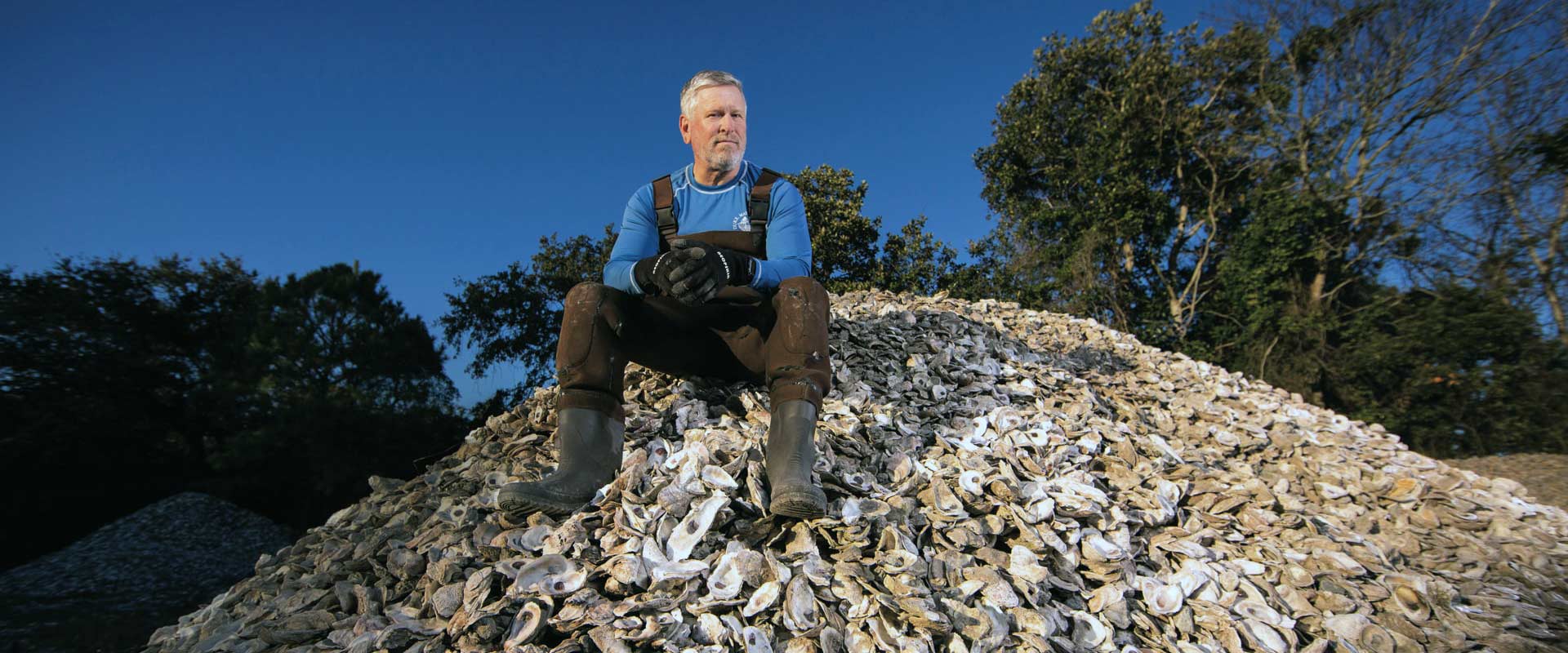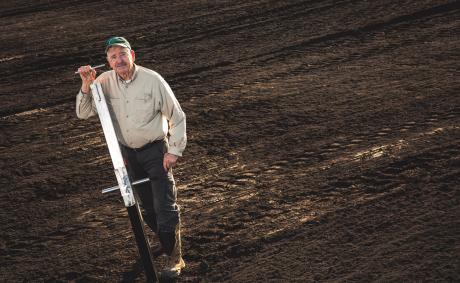When the ocean gets weird, the people who work it are the first to notice.
Commercial fishermen notice summer flounder, historically a North Carolina fish, driven as far north as New York and New Jersey by warming seas. At the same time, shrimp have been flushed from the too-warm shallows of the Chesapeake Bay into deeper North Carolina waters – in staggering numbers. Stone crabs, historically a Florida species, turn up in Beaufort, North Carolina. Farmed oysters, a potential replacement for increasingly unpredictable wild-caught seafood, face their own set of challenges, such as climate-exacerbated die-off.
“They don’t always put it in terms of climate change. Fishermen tend to want to explain things in terms of cycles – Mother Nature,” says Barbara Garrity-Blake. “[Others say] ‘This is climate change.’” Garrity-Blake, a Duke University Marine Lab adjunct professor, community partner and fisheries expert, also serves as president of local seafood advocacy group NC Catch.
The ocean is weirding rapidly, and so are the fisheries it contains. Small seafood operations are hit hardest; a bad enough season can sink them. In Down East, a string of tiny, low-lying fishing villages north and east of the Marine Lab in Beaufort, the future of the commercial fishing industry issue is a survival-of-entire-communities issue, a social justice issue.
At the Marine Lab, no one studies the problem from a detached distance. Rather, researchers are in the tidal mud with the fishing communities threatened by climate change, working alongside them and listening. It’s the only way.
“Community engagement and co-design of the research is not a nice optional add-on,” says Grant Murray, associate professor of marine policy. “I can’t do that research without [local partners].”
Fishermen – still the preferred term, even among women in the field – are ocean conservationists with generations of knowledge. There is more going on than hard science, Murray says. In addition to the business and financial implications of changing waters, there are cultural values and history to consider, too.
Some local fishermen tell Murray they’re hunters. They are in tune with nature, the sea, the adventure. Aquaculture may be a way to keep making a saltwater living as the ocean changes, but it’s also farming, Murray notes. And because widespread aquaculture is new, insurance companies don’t know how to insure an oyster farm. That means there is no check to cover a bad fishing season. Governments, too, have been slow to catch up.
“There’s no coherent state-level policy, and there’s definitely no federal policy,” says Murray.
Duke is in a position to take the risks, alongside the saltwater fishing community, with the goal of finding solutions.
The Duke Aquafarm rests in a shallow salt marsh 20 minutes by boat from the Marine Lab. On Fridays, Marine Lab students join farm founder Tom Schultz, professor of the practice of marine molecular conservation, to wade through muck and tend the oysters at this working farm. Last summer, Schultz experienced a massive oyster die-off firsthand.
Rather than shutter himself in his academic specialty, Schultz reached outward to his aquaculture peers. Oyster farms farther inland were seeing significant losses, sometimes as high as 80 percent. He sat down with ecology colleagues at the Marine Lab, who theorized that the hot, dry summer weather was causing excessive salinity in the area waters.
Threat identified. The scientist kicked in.
Schultz has seen the problem, faced it himself, and now he wants to study oyster populations on the hyper-local level. He’s looking for individual populations that are more resilient to challenges like the too-salty summer of 2022, and he suspects they exist.
“I’m starting to turn toward research questions, but using my skills as a geneticist and a molecular biologist,” Schultz says.
This is research done with, not at, a threatened community.





